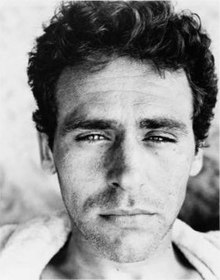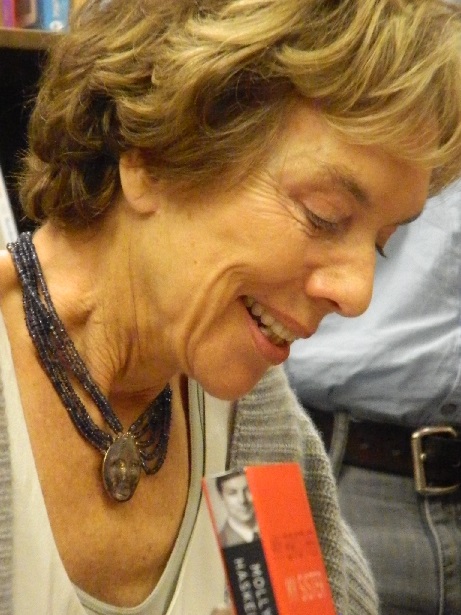Roger Ebert

Roger Ebert (1942 - 2013) was an American film critic, journalist, screenwriter, and author. Known for shows such as Sneak Previews and At The Movies, he also wrote for The Chicago Sun-Times for almost his entire life. Known as one of the most influential film critics in the world, he popularized the "two thumbs up" saying in terms of film. He generally was kinder than most other film critics, generally rating films higher than others did. His use of dry wit and personal anecdotes in his reviews and writings was also something that popularized him.
Your Movie Sucks by
Call Number: PN1995 .E319 2007Publication Date: 2007Roger Ebert's I Hated Hated Hated This Movie, which gathered some of his most scathing reviews, was a best-seller. This new collection continues the tradition, reviewing not only movies that were at the bottom of the barrel, but also movies that he found underneath the barrel.
- Sequel MadnessAn article discussing the overabundance of sequels produced for movies and theories as to why this may be happening.
- The Best Film of All Time Is. . .Ebert discusses two films in particular, "Citizen Kane" by Orson Welles and "Vertigo" by Alfred Hitchcock and discusses just exactly why they're the best films of all time.
Andrew Sarris

Andrew Sarris (1928 - 2012) was an American film critique and leading proponent of auteur theory, the idea that the filmmaker has a distinct enough style that they are the artist, and their style is extremely recognizable. His critiques were viewed as rather elitist and subjective, and his work with auteur theory was heavily critiqued, however he restlessly backed it up. He wrote for many papers as a film critic, including Film Culture, The Village Voice, and The NY Film Bulletin. He also taught courses in film at Columbia University.
You Ain't Heard Nothin' Yet by
Call Number: PN1995.7 .S27 1998Publication Date: 1998Here is a sweeping--and highly personal--history of American film, from the birth of the talkies (beginning with The Jazz Singer and Al Jolson's memorable line "You ain't heard nothin' yet") to the decline of the studio system. By far the largest section of the book celebrates the work of the great American film directors, with giants such as John Ford, Alfred Hitchcock, Charlie Chaplin, Orson Welles, and Howard Hawks examined film by film.
- Notes on Auteur TheoryFound in Volume 27 of Film Culture. An influential paper on auteur theory.
- The Shape of Films to ComeSarris discusses the advances of technology in film and the influences that these technological advances have had. He looks at the shapes and sizes of screens and the struggle with television that cinema had in the 1950s.
Jonathan Rosenbaum

Jonathan Rosenbaum (1943 - ) is an American film critic. He was the head film critic for the Chicago Reader until his retirement, while also working on some of the most famous film publications in the world, including Cahiers du cinéma and Film Comment. A fierce advocate for looking outside of the United States for influential film, he is a proponent of viewing foreign film and discussing it in the same way that we do American film.
Moving Places by
Call Number: PN1994 .R568 1980Publication Date: 1980An autobiographical take on film critique elaborating on the life of Rosenbaum and his experiences with film, along with critiques of specific films and their cultural impact.
- The Classical ModernistRosenbaum examines the works of Manoel de Oliveira, known as the first "classical modernist." It examines common themes and motifs found in the film.
- The Future Is HereExamines the use of lower budget special effects in Science Fiction and Fantasy films of the modern age, and the depiction of the future as a whole.
Manohla Dargis
Manohla Dargis (1961 - ) is an American film critic, one of the top film critics at The New York Times. A five time finalist for the Pulitzer Prize for Criticism, she has been hailed as one of the greatest film critics of all times. Her work has appeared in multiple books.
L. A. Confidential by
Call Number: PN1997.L115 D37 2003Publication Date: 2003Manohla Dargis explores the careers of director Curtis Hanson and writer James Ellroy, based on interviews with both men, to dig deep into the film's obsession with the twinned, equally troubled histories of the Hollywood studio system and the city of Los Angeles.
- The Women Behind HollywoodDargis talks about famous women in Hollywood and the work that they did as screenwriters, editors, and directors.
- Beating the Odds for Love and BlissA critique of the film Long Shot, examining the role of women in the film and in Hollywood, praising it for putting women "on top" and leaving them there.
Manny Farber

Emanuel "Manny" Farber (1917 - 2008) was an American film critic and painter. He had a distinctive prose style in his writing and set of theoretical ideas that influenced film makers and critics for generations. Known for coining the term "underground film", he was an early advocate of many young filmmakers that were not yet respected, including Andy Warhol. His painting was influenced by his favorite filmmakers.
Negative Space; Manny Farber on the Movies by
Call Number: PN1995 .F28Publication Date: 1971A collection of Farber's most famous writings on film.
- Taxi DriverA review of the film "Taxi Driver" by Martin Scorsese.
Dai Jinhua

Dai Jinhua (1959 - ) is a Chinese feminist cultural and film critic. Known for teaching comparative literature, Jinhua has done a large amount of work in film studies through a critical feminist and Marxist lens, examining culture, media, and, specifically, film through the ideas of gender and consumerism and capitalism. She specifically studies Chinese filmmakers and the work that they have done, and how many of them have taken on Western ideas of Asian culture.
- Cinema and Desire: Feminist Marxism and Cultural Politics in the Work of Dai JinhuaA work by Jinhua in English that analyzes many Chinese films and sociopolitical ongoings in China. Available on Amazon.
- I Want to Be Human: A Story of China and the Human.The article focuses on the Chinese film "City of Life and Death" in a broader context. It mentions that the movie represents the severe tragedy of the 1937 Nanjing Massacre, the mass murder of three hundred thousand Chinese within a matter of six weeks.
Pauline Kael

Pauline Kael (1919 - 2001) was an American film critic, writing for The New Yorker for many years. Her writing style stressed the aesthetic of writing, dealing with the personal feelings on the film. She takes on an almost autobiographical style in the way she writes, wanting to move away from the commonly academic form of film criticism in prior critics. Her opinions regularly were not the same of her colleagues, and she was not afraid to argue that she was, in fact, the one who was correct. She is renown for reinventing film criticism as we know it.
Hooked by
Call Number: PN1995 .K235 1989Publication Date: 1989A collection of Kael's reviews from July 1985 to June 1988.
- A Sense of DisproportionKael examines how big budget productions tend to have "thin" plots, while also drawing comparisons between comedy and gag-writing. She also writes critiques for a specific few films, including "The Big Sleep" and "Grand Prix."
- Movie BrutalistsKael discusses young filmmakers in the U.S. and works to explain their film-making style. She asserts that film experimentalists are the ones who are doing the "true art" of cinema.
James Agee

James Agee (1909 - 1955) was an American film critic, one of the most influential in the world in the 1940s. Writing for Time and The Nation as a film critic, he was also a reviewer of literature and a writer himself. He was a proponent of Chaplin and Olivier when they were not as popular as they are now. His work only became famous post-mortem, but he is now seen as one of the greatest film critics of all time.
Agee on Film by
Call Number: PN1993.5.A1 A34 1964Publication Date: 1964Various film reviews done by Agee, compiled together into one book.
Molly Haskell

Molly Haskell (1939 - ) is an American film critic and renown feminist. Contributing to The Village Voice for a time before moving on to New York magazine and Vogue, she is renown for being an outspoken woman in the field of film criticism, a generally male dominated field. She looks at film both as a critic and as a feminist, working to understand the experiences of women in film and how women are portrayed. Specifically she analyzes the role of gender roles within film.
Holding My Own in No Man's Land by
Publication Date: 1997In Holding My Own in No Man's Land, a series of pieces written in the twenty years since the publication of From Reverence to Rape, Haskell once again explores the relationship between women and men, and between the movies and those who watch them.
- Barbara Stanwyck: Dreams of Starting OverThe article focuses on the British film industry and features Barbara Stanwyck, who brought an emotional complexity to a series of unforgettable performances in the field. Other information such as Stanwyck's roles as ingenues, felons, gun molls, career women, women of the church in the course of more than 80 films, is presented.
- Call Me by Your NameA review of Call Me By Your Name, the 2017 film.
